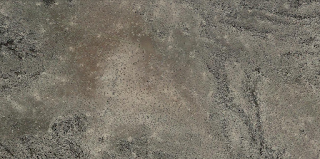Looking at satellite views of the desert on Google Earth is addictive behavior and turns up one puzzling pattern after another. I am going to tell you that the white funnel you see here:
...is a very typical hunting site in the southern Nevada and northwestern AZ....On top of a low mesa...a lighter bowl with a darker ring. The black ring at the edge of the mesa is geology but the dark ring around the white patch, with gradation, (probably) includes lithic debris.
Bighorn sheep like to climb up on tops of things. Looking at where they have worn the hillsides and ridges to a "threadbare" white patch - for example in the funnel - it is clear they like to get up on top of things. I believe is is so they can look around; not just for food browsing opportunities.
The sheep have excellent eyesight. I watched a modern Bighorn sheep hunt on YouTube and every time the hunters got their binoculars focused on a distant animal, say 2 miles away, you could see the sheep looking back directly at the hunter. The hunters chased after the sheep, tried to sneak up on them, and eventually took a shot from 1/4 mile away. This is not at all what ancient hunters would do. They knew where to wait, and how to get the animals to within reach of their spears. I think they let the animals betray themselves. I think a hunt might have taken a day or so, while animals were slowly herded up to a funnel. An unexpected change of wind direction could spoil several days work.
Be that as it may, what is driving me crazy is trying to understand the little white dots that keep showing up in the pictures of game trails, where I think a hunting "trap" was arranged.
The game trail crosses the mesa in a vertical direction. Looking at the pattern of white dots, there is not much doubt if you could measure alignment as a positional correlations along different directions, then the best directions are ones that are more or less parallel with the game trail. In other words, all those white dots form alignments parallel with the game trail. For what? I do not see how it could be geology.
Here is another funnel. Given examples of white dot alignments like this:
It is pretty clear that
some of the white dots are deliberate products of man. In this case it looks like the dots are part of a fence that encourages game to go into the center of the funnel. Here is a closeup of the center:
Hmm? More stone walls. Hunter's blinds I guess.
Anyway, with examples like the low mesa above [which is near Red Lake AZ], I start looking at the dots near funnels and I can't decide if they are natural or man made. If man made, why would they need so many of them?
It seems inevitable that questions like this are going to keep me busy until February, when I get to go and check some of these things on foot, and get out of Google Earth.











.png)











